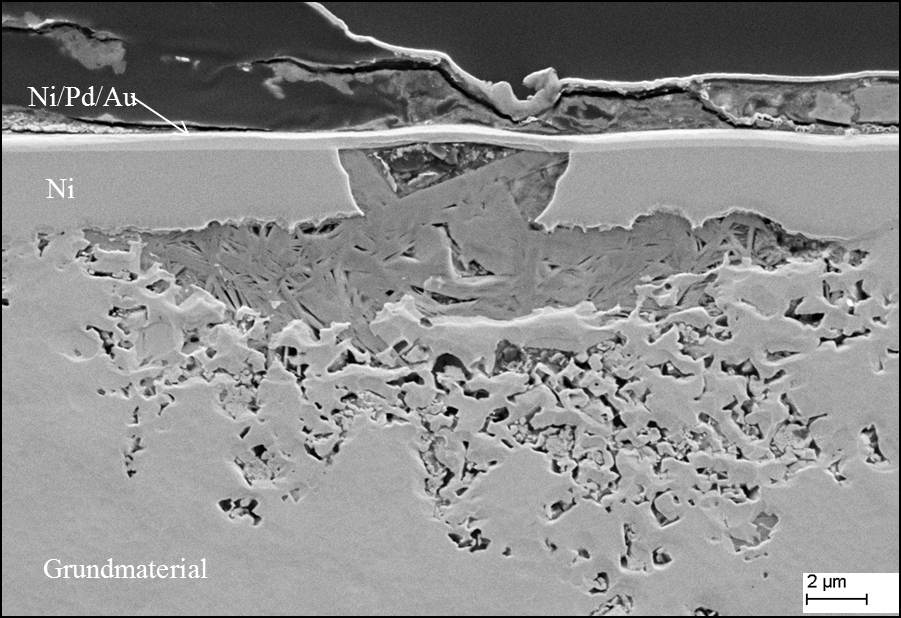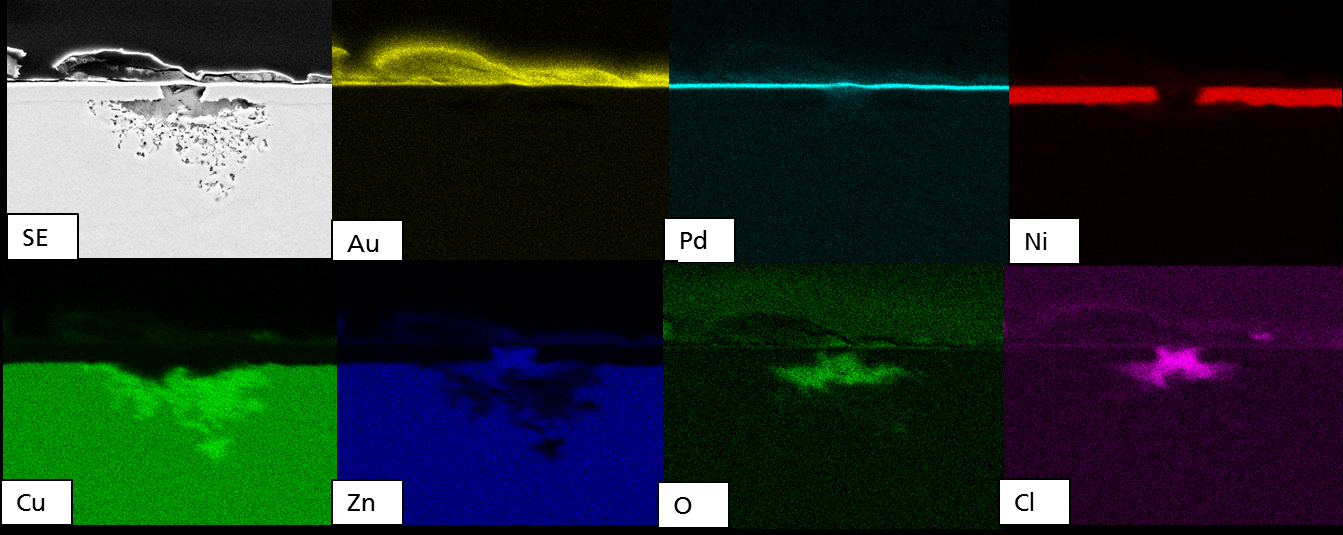Materials in electronic components are exposed to corrosive processes due to environmental conditions such as dampness, temperature and pollution. Corrosion – also the materials reaction to its environment – usually occurs locally and results in components and systems being significantly affected; this increasingly is the cause of failure of electronic components.



The Fraunhofer Institute for Microstructure of Materials and Systems IMWS with its Center for Applied Microstructural Diagnostics CAM has been examining electronic components since 1992 with regards to their fault mechanisms and causes of failure. The proportion of faults due to corrosive processes has clearly increased in the past five years. The reason for this is the progressive miniaturisation and broad use of control electronics in automobile and performance electronics.
Standard tests to examine corrosion have hitherto been very lengthy, expensive and could not deliver sound evidence on the corrosion behaviour of actual assembly modules. Plug connectors or circuit boards – components, which are difficult to access for chemical analysis - pose particular problems. Fraunhofer IMWS together with ECH Elektrochemie Halle GmbH is working on the research project »Developing an electrochemical rapid test for high reliability electronic application – analyses and method development for electrochemical processes in components for automobile and performance electronics« (ESAMKA) in order to establish a more efficient and environmentally-friendly test method. The research project will run until 31st January 2020 and aims to develop a faster and more cost effective test method in order to explore local electrochemical processes on automobile and performance electronics components and contacts when they are exposed to corrosive media agents. This method can be used in the area of safety-related applications such as, for example, in technological qualification for autonomous driving in order to explore chemical corrosion mechanisms.
The test method is based on standardised electrochemical measurements. A locally usable, miniaturised corrosion-measuring cell must be developed for this. »We want to understand locally occurring electrochemical reactions scientifically and characterise them under the specifically required test conditions, so that optimised countermeasures can be applied on this basis«, says Sandy Klengel, project leader at Fraunhofer IMWS. The new Fraunhofer IMWS and ECH GmbH test method is to be used for monitoring industrial processes. In the first instance, the main emphasis is focused on the development of a local micro test method for typical coating systems in the electronics industry, with thin metallised top layers in gold, which are a few nanometres thick. Here, questions on monitoring of coatings, density and failure phenomena such as the Black Pad Effect – the corrosion of deposited nickel/gold layers without current – will be examined. The newly developed measuring method and the relevant ECH GmbH measuring instruments are tested at Fraunhofer IMWS using comparison measurements and associated high resolution physical methods (scanning electron microscopy, energy dispersive x-ray analysis, transmission electron microscopy). The correlation of the method to be developed with the above-mentioned standard tests can be determined with this, creating the basis for the market reputation of the device, which is to be developed by ECH Elektrochemie Halle GmbH.
»The new miniaturised testing device allows, for the first time, the characterisation of corrosive processes in the smallest of electronic components without having to rely on the costly preparation of model samples or reference test specimens. This allows the much accelerated and more efficient evaluation of new materials and material combinations regarding their corrosion behaviour«, as Sandy Klengel assesses the research project in conclusion.
